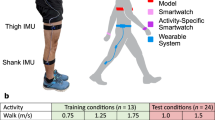Abstract
To accurately predict and monitor an individual’s health, accurate information on the changing patterns of the individual’s physiological signals is required. In this study, obesity parameters were analyzed using regression analysis based on the physiological signals of individuals who performed continuous exercise. To this end, three healthy adult subjects participated in the experiment, and their health management was analyzed by monitoring changes in health information parameters while they performed continuous exercise with daily activities over a long period of time. Subjects’ exercise parameters included heart rate were collected through smart watches, and their specified obesity parameters were measured using a smart scale. The analysis results showed that weight and body fat decreased and muscle composition increased in conjunction with the amount of exercise for two subjects who performed continuous exercise while conducting daily activities. For one subject who did not perform any specific exercise, however, the weight and body muscle rate tended to increase slightly and the body fat rate tended to decrease slightly. It was found that continuous exercise improved the subjects’ ability to adapt to exercise, thereby increasing Max BPM and reducing weight. Performing continuous exercise while conducting daily activities appears to improve physical measures of health, as it decreases weight and body fat rate and increases body muscle rate. Health management analysis based on the physiological data collected from smart devices is expected to play a role in keeping the human body healthy.






Similar content being viewed by others
References
Patrizia, G., Enrica, P., Daniele, G., & Francesco, F. (2020). A worldwide overview of the wellness economy market: The technogym and Peloton case studies. European Scientific Journal, 16(10), 5–24.
Blaine, R., & Alexandria, D. (2016). Health at hand: A systematic review of smart watch uses for health and wellness. Journal of Biomedical Informatics, 63, 269–276.
Hass, C. (2019). A practical guide to usability testing. In: M. Edmunds, C. Hass, & E. Holve (Eds.), Consumer Informatics and Digital Health. Cham: Springer. https://doi.org/10.1007/978-3-319-96906-0_6.
Choi YS (2017) A study on UI/UX design of mobile application of home body composition analyzer focusing on the Inbody dial. Korea Soc Basic Des Art 18(2)
Dunn, J., Runge, R., & Snyder, M. (2018). Wearables and the medical revolution. Pers Med, 15(5), 429–448.
Kellogg, R. A., Dunn, J., & Snyder, M. P. (2018). Personal omics for precision health. Circulation Research, 122(9), 1169–1171.
Perez, M. V., et al. (2019). Large-scale assessment of a smartwatch to identify atrial fibrillation. New Engl J Med, 381, 1909–1917.
Li, X., et al. (2017). Digital health: tracking physiomes and activity using wearable biosensors reveals useful health-related information. PLoS Biology, 15, e2001402.
Radin, J. M., Wineinger, N. E., Topol, E. J., & Steinhubl, S. R. (2020). Harnessing wearable device data to improve state-level real-time surveillance of influenza-like illness in the USA: a population-based study. Lancet Digit Health, 2, e85–e93.
Zhu, G., et al. (2020). Learning from large-scale wearable device data for predicting epidemics trend of COVID-19. Discrete Dyn Nat Soc, 2020, 6152041.
Yu, S. H., Cho, W. H., Park, C. Y., & Lee, M. K. (1987). Healthcare utilization and its determinants among island inhabitants. Korean J Prev Med, 20(20), 287–300.
Lee, J. H., Ko, K. H., Kim, Y. S., & Rhee, J. A. (1988). Physician utilization and its determinants in rural and urban slum areas. Journal of Preventive Medicine and Public Health, 21(2), 404–418.
Joo, K. S., Kim, H. J., Lee, S. H., & Min, H. Y. (1996). A comparative study on medical utilization between urban and rural Korean. Journal of Preventive Medicine and Public Health, 29(2), 311–330.
Shin, H. C., Kang, J. Y., Park, W. S., & Kim, S. A. (2009). Health status and medical utilization of women in rural areas. J Agric Med Commn Health, 34(1), 67–75.
Lee, Y. J. (2005). The effects of regional characteristics on inequality of healthcare resource distribution. J Crit Soc Welf, 21, 49–78.
Acknowledgements
This work was supported in part by the Ministry of Trade, Industry and the Korea Evaluation Institute of Industrial Technology Energy Science (KEIT) in 2017 (Core Medical Equipment Technology Development Project/10068076) and by the Basic Science Research Program through the National Foundation of Korea (NRF) funded by the Ministry of Education (No. NRF-2020R1C1C1008728).
Author information
Authors and Affiliations
Corresponding author
Additional information
Publisher's Note
Springer Nature remains neutral with regard to jurisdictional claims in published maps and institutional affiliations.
Rights and permissions
About this article
Cite this article
Chong, W., Kim, S., Yu, C. et al. Analysis of Health Management Using Physiological Data Based on Continuous Exercise. Int. J. Precis. Eng. Manuf. 22, 899–907 (2021). https://doi.org/10.1007/s12541-021-00503-3
Received:
Revised:
Accepted:
Published:
Issue Date:
DOI: https://doi.org/10.1007/s12541-021-00503-3




